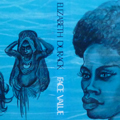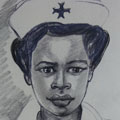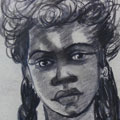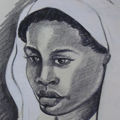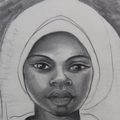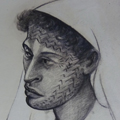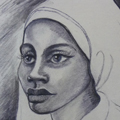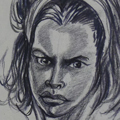This section contains selections from the hundreds of portrait and landscape drawings made in 1968 when Elizabeth Durack travelled for the first time through the Territory of Papua New Guinea. She was there, commissioned by Australia's Department of External Territories, to portray the part that women were playing as the country moved towards Independence.
Elizabeth travelled by road, boat and air. She was met and welcomed by mothers and grandmothers, nurses, wives and teachers, nuns and students, villagers and welfare workers, politicians, gardeners, socialites and market-stall holders. Places visited included: Port Moresby, Goroka, Kundiawa, Mt Hagen, Bulolo, Lae, Madang, Wewak, the Sepik, Angoram, Ambunti and the islands of Manus, New Ireland and New Britain. Two books resulted: Face Value: Women of Papua New Guinea (Ure Smith, Sydney) and Seeing — through Papua New Guinea: An Artist's Impressions of the Territory (The Hawthorn Press, Melbourne.) Both were published in 1970.
The human face itself, with its infinite varieties, was ever an important source of inspiration and through direct observation, together with study of the written historical record, Elizabeth gleaned insight and understanding of the island's long past and its standing within the contemporary world.
Face Value: Women of Papua New Guinea presents examples of the many and varied contributions that women — modern and traditional —were making to their country. To this day, the role and contribution of the women of PNG exists as an incalculable asset. The dust jacket records: "the faces in Face Value are eloquent of a varied, intelligent and beautiful people".
In February 2016 the full body this collection — some 400 pieces — was placed with the RG Menzies Library, The Australian National University, Canberra.
•The medium for the drawings is variously pencil, ink, wash and hand-finished dyelines.
•With minor variations, each work measures: 38 x 26cm.
